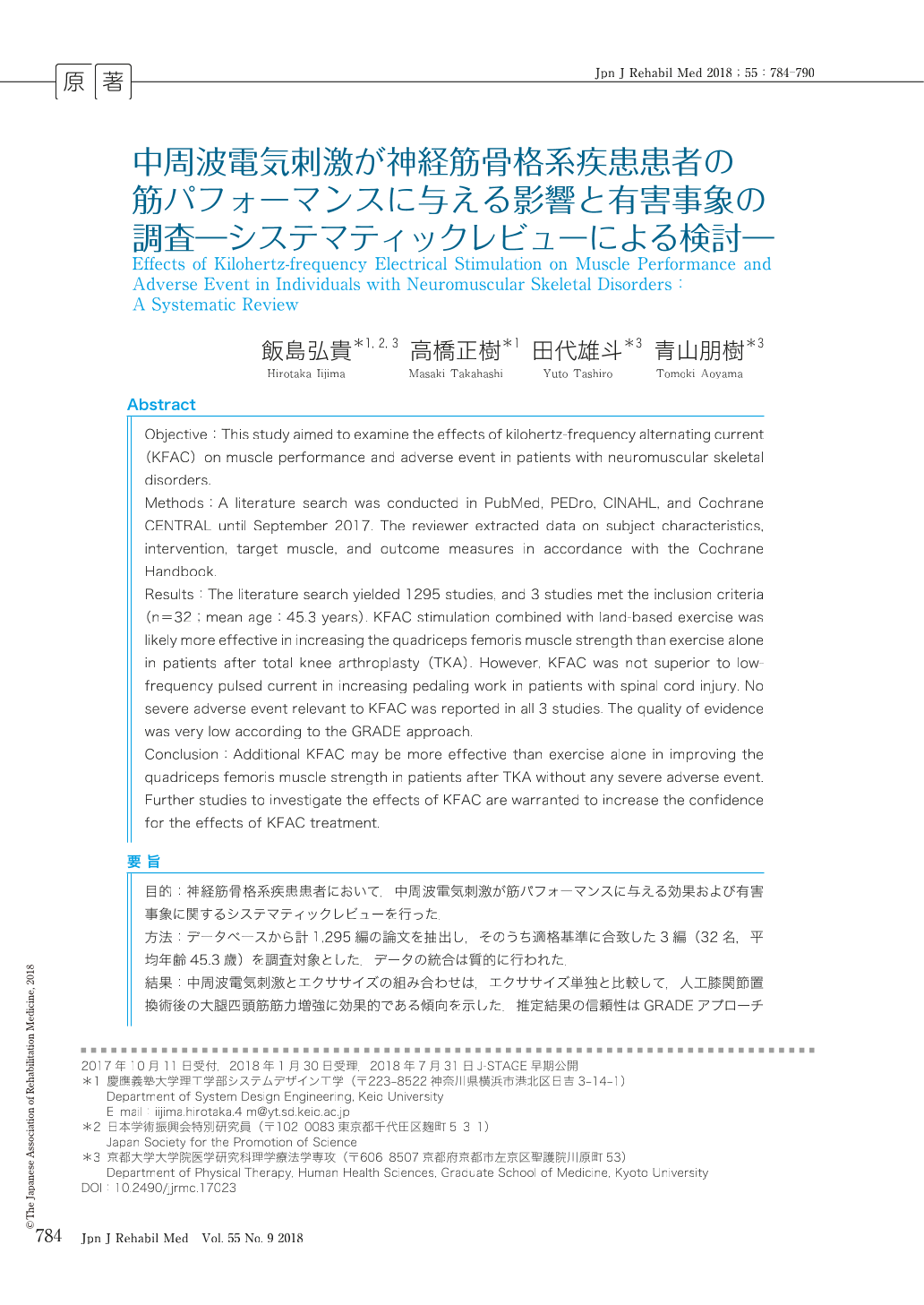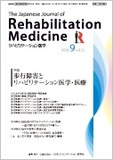Japanese
English
- 販売していません
- Abstract 文献概要
- 1ページ目 Look Inside
- 参考文献 Reference
要旨
目的:神経筋骨格系疾患患者において,中周波電気刺激が筋パフォーマンスに与える効果および有害事象に関するシステマティックレビューを行った.
方法:データベースから計1,295編の論文を抽出し,そのうち適格基準に合致した3編(32名,平均年齢45.3歳)を調査対象とした.データの統合は質的に行われた.
結果:中周波電気刺激とエクササイズの組み合わせは,エクササイズ単独と比較して,人工膝関節置換術後の大腿四頭筋筋力増強に効果的である傾向を示した.推定結果の信頼性はGRADEアプローチでvery lowと判定された.脊髄損傷患者のペダリング総仕事量は,中周波電気刺激では低周波電気刺激と比較して有意差はなかった.また,重度有害事象の発生はなかった.
結論:中周波電気刺激は有害事象を示すことなく大腿四頭筋筋力増強に有効な可能性がある.今後,質の高い研究を重ね,推定結果の信頼性を高める必要がある.
Objective:This study aimed to examine the effects of kilohertz-frequency alternating current (KFAC) on muscle performance and adverse event in patients with neuromuscular skeletal disorders.
Methods:A literature search was conducted in PubMed, PEDro, CINAHL, and Cochrane CENTRAL until September 2017. The reviewer extracted data on subject characteristics, intervention, target muscle, and outcome measures in accordance with the Cochrane Handbook.
Results:The literature search yielded 1295 studies, and 3 studies met the inclusion criteria (n=32;mean age:45.3 years). KFAC stimulation combined with land-based exercise was likely more effective in increasing the quadriceps femoris muscle strength than exercise alone in patients after total knee arthroplasty (TKA). However, KFAC was not superior to low-frequency pulsed current in increasing pedaling work in patients with spinal cord injury. No severe adverse event relevant to KFAC was reported in all 3 studies. The quality of evidence was very low according to the GRADE approach.
Conclusion:Additional KFAC may be more effective than exercise alone in improving the quadriceps femoris muscle strength in patients after TKA without any severe adverse event. Further studies to investigate the effects of KFAC are warranted to increase the confidence for the effects of KFAC treatment.

Copyright © 2018, The Japanese Association of Rehabilitation Medicine. All rights reserved.


